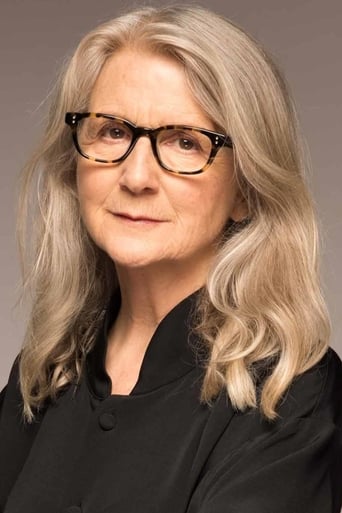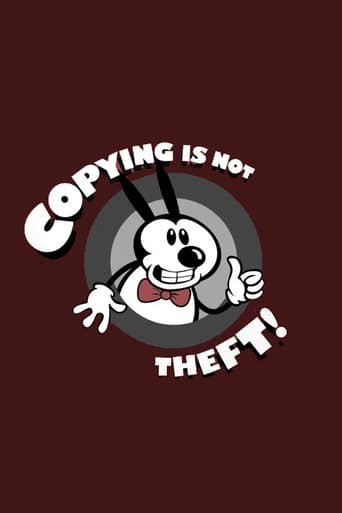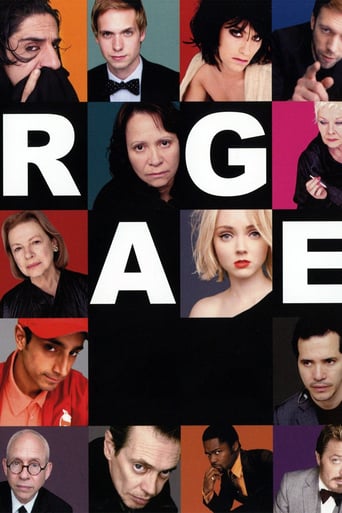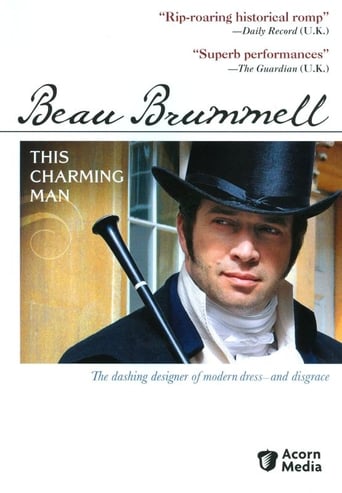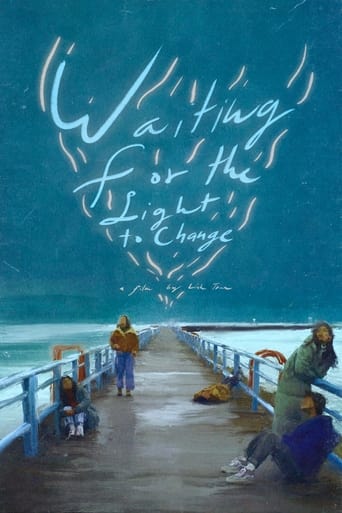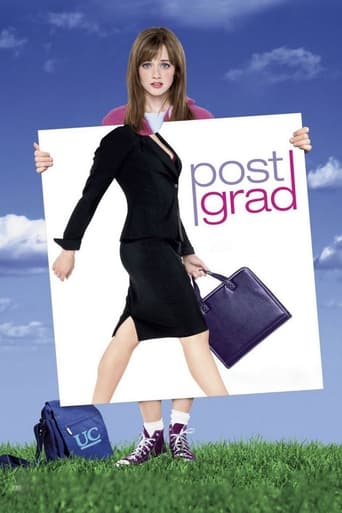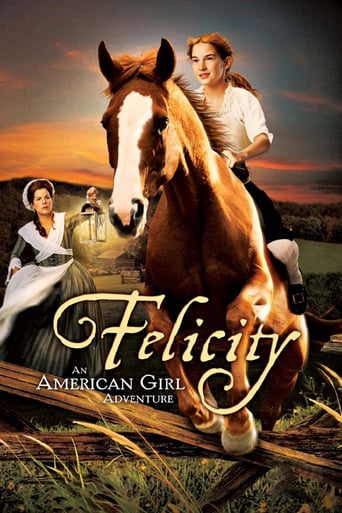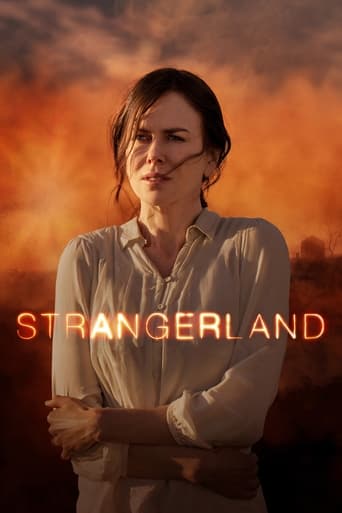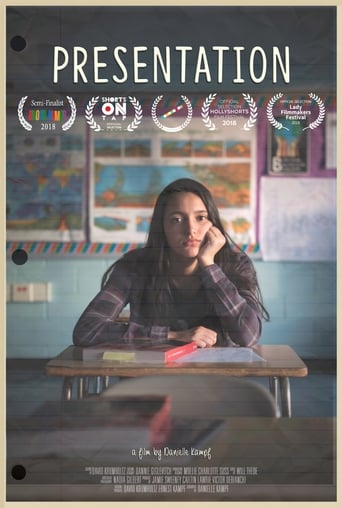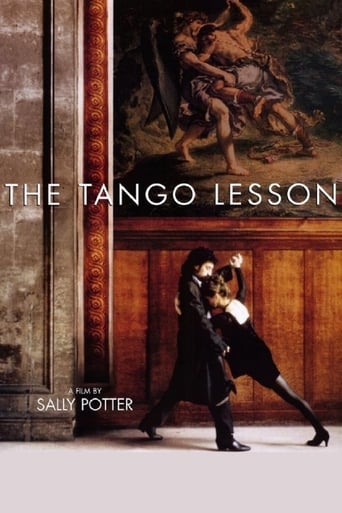
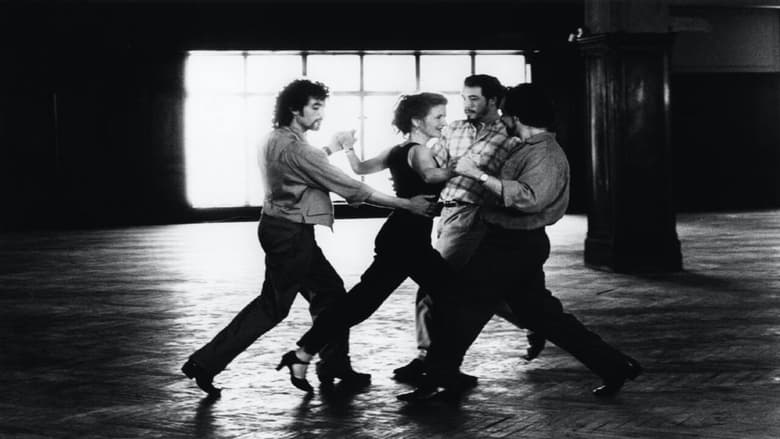
The Tango Lesson (1997)
On a trip to Paris Sally meets Pablo, a tango dancer. He starts teaching her to dance then she returns to London to work on some "projects". She visits Buenos Aires and learns more from Pablo's friends. Sally and Pablo meet again but this time their relationship changes, she realises they want different things from each other. On a trip to Buenos Aires they cement their friendship.
Watch Trailer
Cast


Similar titles
Reviews
Absolutely the worst movie.
Absolutely Fantastic
This is a must-see and one of the best documentaries - and films - of this year.
The story-telling is good with flashbacks.The film is both funny and heartbreaking. You smile in a scene and get a soulcrushing revelation in the next.
Whether you judge The Tango Lesson to be as perfect as a film can get, or a self-indulgent autohagiography with nice legs and sets, is probably about your viewpoint. There is bound to be at least one reader who will disagree with either view. So I am inclined to look at what the director was trying to achieve. Sally Potter is an established art-house filmmaker with particular interests in gender politics and dance. She also sings, writes and, in this film at least, acts.Tango is a dance drawing heavily on passion. Unlike many dances, its emotional range includes jealousy and betrayal. When sparks fly, they are not just sparks of attraction. Male power and domination, silence that bites, and doomed love and destruction (hence the metaphor of Bertolucci's Last Tango in Paris). A woman never escapes the man's embrace. The brilliance of her steps give the appearance of being entirely due to her partner's masterful guidance. At one point in our movie, Potter's partner, enraged, tells her she must 'do nothing' – he means nothing that doesn't come from him.It is a perfect dance to build dramatic metaphor around.But Potter's interest goes further. She wants to examine role reversal (this is the director who has had a hit a few years earlier with the sexual ambiguous Orlando). In The Tango Lesson, she plays opposite a top tango dancer, mentally submitting to him in order to learn the dance. Her character is a film director, disillusioned with a Hollywood deal and looking for a new project. Could it be dance? In the second half, she enlists him to play in a film. The power position is reversed. He must follow instead of lead. He must take direction.The success of this plot relies almost entirely on its real life elements. The circumstances in which the film was made mirror those depicted in the film-within-a-film. Names of principle characters are not changed. Potter does all her own dancing. Obvious commercial sell-outs are avoided.So in terms of dancing and the gender politics, how well does the film perform?The answer has to be, "Magnificently." The tango scenes are among the best of any motion picture. Tango on the stage, tango on the streets. Tango in the dancehalls, tango on the water's edge. Tango in rain, tango in snow. Potter described some of the technical challenges, saying that in the rain there were, "a limited number of takes possible due to the limited number of dry jeans." But the result is stunning. If you wanted a tango photo to hang over your fireplace, you would be spoilt for choice with stills from this film. Perfect mise-en-scene and impressive lighting make the film visually intoxicating. And when we hear Libertango – the most familiar of all tango tunes – the energy explodes as Potter bursts from the dance studio, dancing with several men at once.Cinematography is endlessly inventive. During a stage performance, the camera is positioned so that it faces the audience, dancers silhouetted by the dazzle of spotlights. "I wanted to show something of the visceral sensation of being onstage," she says, "with the lights in your eyes." Gender analysis is equally successful. Potter deals with simple male chauvinism, and in a matter-of-fact rather than an unkind way. Pablo and his friends act in a 'perfectly reasonable' manner which Potter then exposes as unreasonable. They cherish a glamorised idea of film-making. She has to exert gentle authority when they 'decide' that they've waited long enough for someone to turn up; or when Pablo might not 'want' to shed a tear in her 'little film.' She must – and does – handle their unprofessional emotions, fears and ignorance, exactly as Pablo had to handle hers when she was learning to dance. And now it is against his every instinct. He must follow and let her lead.Potter takes us beyond gender politics to the creative process. The film opens with her wiping a white table, then she sits at it with a blank sheet of paper. She starts to script, but discards one idea after another. Fast cuts to bursts of colour (in the Hollywood movie she had originally planned to make) illustrate action sequences of a movie style that makes money. They are like fragments of a finished film, waiting to be found. She hovers, waiting for the right idea to take form. "I know this moment well. It's the most precious, delicate, terrifying moment in film-making. The void beckons, seductively. But at any moment, the pencil will touch the blank page and the first, irrevocable step will have been taken. Every such step can feel like an act of treachery against abstract and infinite perfection." That state of 'becoming,' the moment before any definite action is decided, parallels the state of preparedness a follower must have in dance.It is the philosophy that an early feminist-filmmaker, Maya Deren (also a dancer), propounded in connection with films (such as her Study in Choreography for the Camera). For her, it was an essential trait of being a woman, the ability to wait, as opposed to a man's desire for immediacy. For Potter, who had focused on dancing in her earlier life, the film becomes a voyage of discovery. "I remember suddenly what I always loved about dancing – the combination of vigorous endeavour, present timidness, and dedication to process – the sure knowledge that you never 'arrive', you are instead in a constant process of arrival. It is itself, and it is a metaphor: for learning, for living, for being."On the downside, there is not a lot of story. The Tango Lesson is Strictly Ballroom stripped of make-up, witticisms, clichés, overacting, and the pointless, predictable, but highly entertaining storyline. The Tango Lesson proudly states that the ideas (and the dancing) should be sufficient. Sadly for some people of course, it won't.
Men are traditionally seen as the stronger sex. Men are usually portrayed as being more powerful mentally and in strength than woman. The tango is a very famous and difficult dance that has the man being the stronger of the two sexes. Within the movie The Tango Lesson, directed and written by Sally Potter in 1997, the character Sally starts taking tango lessons by a man named Pablo. During the dance lessons Sally is taught to tango. Within her lessons she is taught to follow the man's lead. While dancing with Pablo, Sally becomes a very good dancer. Pablo asks her to join him in a dance that will take place in front of a very large audience. While they are dancing Sally makes very minor mistakes. While exiting the stage Pablo stays out longer and takes more bows, this can symbolize that he feels that he is the supeiror dancer. When they are off stage Pablo yells at Sally saying that he was "messing up" his dance because she was leading and taking up his space. He said that this prevented him from dancing.That situation shows that Sally is seen as the weaker and less important sex. Sally argues with Pablo that he cant handle the fact that she can lead and will. This shows that she realizes how Pablo is thinking and sees himself when he dances with her. The Tango Dance represents the difference of roles between males and females. Overall it was a very different kind of movie, there wasn't a lot of talking, but there was a lot of very good dancing. This is a good movie to watch if you are learning how to dance the tango or interested in watching movies that show very good dance scenes.
What happens when two dominant personalities fall in love? Who gets to lead? Who gets to follow? What if it doesn't suit either one to follow? Writer/director Sally Potter is also the lead actress in this dramatic love story about a film director (herself) making a movie about tango. Sally meets Pablo Veron, an authentic world-class Argentinean tango dancer, and convinces him to give her tango lessons. Pablo obliges her, in hopes of starring in one of her movies. Sally gets good enough to become his professional dance partner. The movie is divided into "Lessons." If you're a dancer, you should see this film if for no other reason than the numerous spectacular dance scenes. Half-way through, the viewer realizes that these "lessons" are not about dance after all, but about life. The tango is used as a metaphor for the power struggle between a man and a woman falling in love, but being stymied because each insists on being in control. Like the tango, the tempo starts out slowly and crescendos as Sally and Pablo's professional and personal relationship deepens and grows more volatile. Can a relationship like this survive? This movie was funded by the French government. It's in English with a few French subtitles; set in France and Argentina.
My wife and I are Tango lovers! This movie takes you to a level of dance that is truly entrancing. The scenes are mesmerizing as the dance steps unfold. We have rented the video several times AFTER we experienced the movie at a local Cincinnati "art theater". Sally is wonderful! We agree that the plot of the movie takes the viewer into a secondary premise. There is the mystique of the various models who have bright color gowns or dresses on them. Then, the quick segue from dance to model can be confusing for the viewer. We felt that the overall sensations of the movie were true dancing, and the will of a person trapped in the routine of daily job expectations can drag one down into depression and ennui. The reason for Sally's release to explore tango was very realistic...bad flooring in her flat. The movie came back to that premise several times to keep us in the loop of her forays into dance and Holiday. This movie contains development and climax. We enjoyed the character growth and the intricacies of the finer dance steps of Argentinian Tango. Bravo to Sally Porter!


